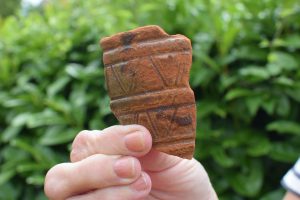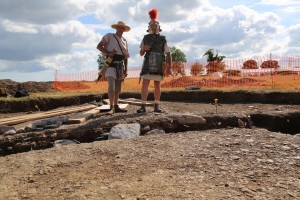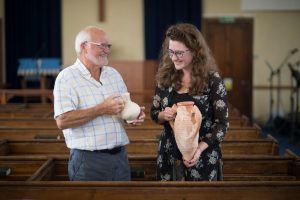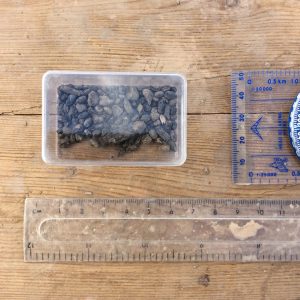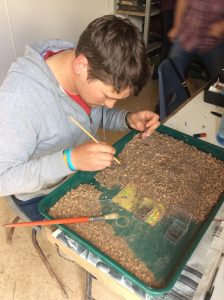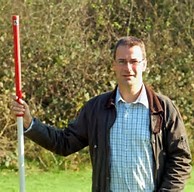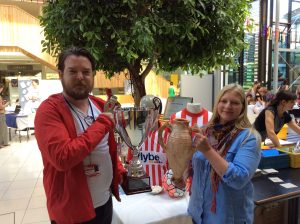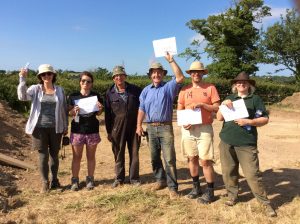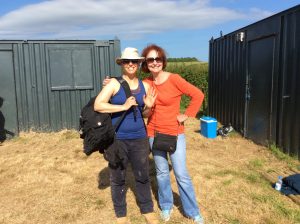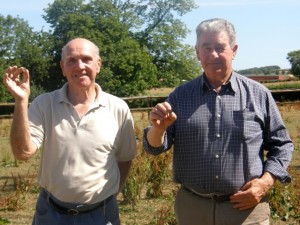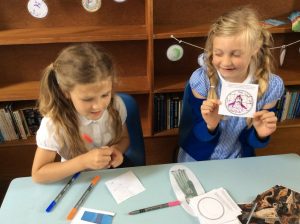Here’s the third of our intern Sophie’s blogs. Sophie is on hand to talk to visitors at the Hub, Ipplepen Methodist Church, East St, Ipplepen until Thursday 29th June, 4pm.
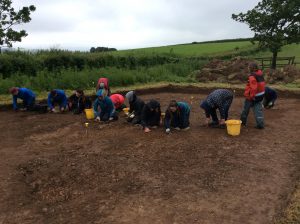
Where does Ipplepen fit in the Roman Empire?
When the Romans landed in AD 43 they had a large impact upon many places in Britain. However, up until recently scholars in Romano-British history had not thought that Devon was to be included in these places. It was widely agreed that Devon was not largely affected by the Roman rule and it was assumed that the army had not ventured much past Exeter (Roman Isca Dumnoniorum). This meant that the inhabitants of Devon, unlike those of London, York and Colchester (where the presence of the Roman military was keenly felt), were assumed to live in a simpler and more traditional manner.
However, after the discovery of Ipplepen all of these assumptions are now being challenged. One of the most striking features of Ipplepen is the degree it shows of Roman influence. For instance to date around 150 Roman coins have been recorded. The coins range from a Republican denarius of 49 BC to a nummi of Arcadius, dating to AD 383-408. Coins are usually rare in Devon and Cornwall, so much so that it was the concentrated presence of these coins which prompted further investigation which has now turned into the excavation. These coins not only show the Roman influence present in Ipplepen, but also that Ipplepen was part of the wider Roman economy, stretching all the way back to Rome itself.
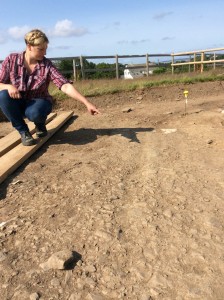
Another imposing Roman feature present in Ipplepen which may have once been thought out of place in such a rural area is the Roman road which runs through the settlement. The road, first discovered during the first archaeological evaluations in 2011, and excavated in 2014 and 2015, consisted of five phases. Each phase is of typical construction for a Roman road; agger, bedding layer, cobbled surface and roadside ditch. The fourth of the road phases contained signs of wear (wheel ruts and pot holes) and maintenance. An amphora rim, neck and shoulder was found in the bedding sand for the fourth phase of the road and dated to AD 43-70, the first stage of the Roman occupation in Britain. The
quality of the earlier phases of the road as well as the associated time mean that the road can be used to see civic and official activity in the area, hinting at the importance of the area.
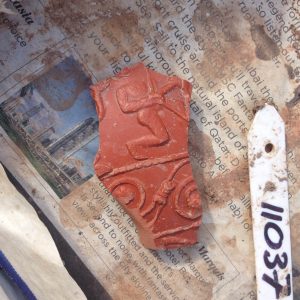
Lastly, but not at all least, comes the Roman style of pottery found in Ipplepen. Not only can local ware be found on site but also finer examples of Samian ware which is of a higher quality and imported from the continent. Near to the road was found a large un-abraded sherd of imported Samian ware (AD 1st-2nd century). This was stamped with a makers mark, AUC, which archaeologists were able to trace back to France AD 150-180. Together with the amphora, the pottery evidence shows that luxury goods were being imported from the continent and the wider Roman empire. This leads to the assumption that at least some people living at Ipplepen developed Roman tastes and had the means to import luxury goods from far afield. Although some of the features of Ipplepen are more commonplace in other parts of the country, it is the very fact that they appear in a landscape so far west that makes them so groundbreaking. Though Ipplepen is on the periphery of what was once the province of Britannia it can be seen that they very much participated in the Roman empire, both culturally and economically. As Danielle Wootton has said “Until recently, who would have thought that Ipplepen village was once ‘plugged in’ to the Roman empire?”!
